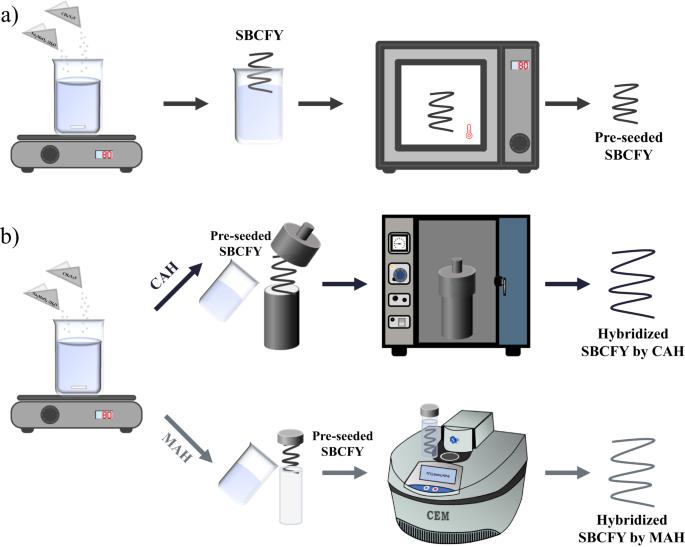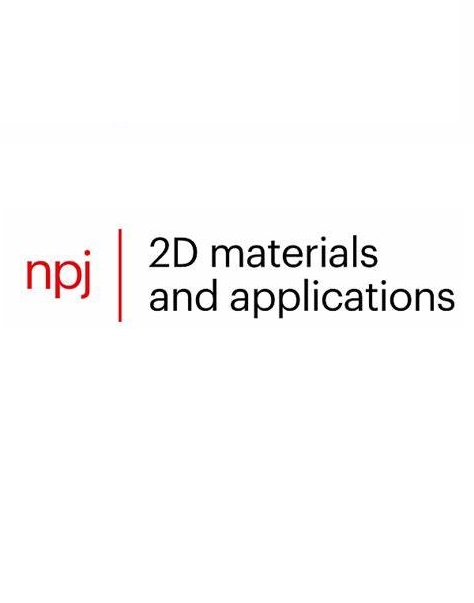MoS2 decorated carbon fiber yarn hybrids for the development of freestanding flexible supercapacitors
IF 8.8
2区 材料科学
Q1 MATERIALS SCIENCE, MULTIDISCIPLINARY
引用次数: 0
Abstract
Academic and industrial efforts have focused on developing energy storage devices for wearable and portable electronics using low-cost, scalable, and sustainable materials and approaches. In this work, commercially available stretch-broken carbon fiber yarns (SBCFYs) were hybridized with mixed phases of 1 T and 2H MoS2 nanosheets via conventional and microwave-assisted heating (CAH, MAH) without the use of binders to fabricate symmetric freestanding 1D fiber-shaped supercapacitors (FSCs). Electrochemical characterization performed in a three-electrode configuration showed promising results with specific capacitance values of 184.41 and 180.02 F·g−1, at 1 mV·s−1 for CAH and MAH, respectively. Furthermore, after performing 3000 CV cycles at 100 mV·s−1, the capacitance retention was 79.5% and 95.7%, respectively. Using these results as a reference, symmetric 1D FSCs were fabricated by pairing hybridized SBCFYs with MoS2 by MAH. The devices exhibited specific capacitances of approximately 58.60 ± 3.06 F·g−1 at 1 mV·s−1 and 54.81 ± 7.34 F·g−1 at 0.2 A·g−1 with the highest power density achieved being 15.17 W·g−1 and energy density of 5.06×10–4 Wh·g−1. In addition, five 1D FSCs were hand-stitched and connected in series onto a cotton fabric. These supercapacitors could power a temperature and humidity sensor for up to six minutes, demonstrating the practicality and versatility of the prepared 1D FSCs for powering future electronic systems.

用于开发独立式柔性超级电容器的 MoS2 装饰碳纤维纱混合物
学术界和工业界一直致力于利用低成本、可扩展和可持续的材料和方法开发用于可穿戴和便携式电子设备的储能装置。在这项工作中,通过传统加热和微波辅助加热(CAH、MAH),将市售的拉伸断裂碳纤维纱(SBCFY)与 1 T 和 2H MoS2 纳米片的混合相杂交,而不使用粘合剂,从而制造出对称独立的一维纤维状超级电容器(FSC)。在三电极配置下进行的电化学特性分析表明,CAH 和 MAH 在 1 mV-s-1 下的比电容值分别为 184.41 和 180.02 F-g-1,结果令人鼓舞。此外,在 100 mV-s-1 下进行 3000 次 CV 循环后,电容保持率分别为 79.5% 和 95.7%。以这些结果为参考,通过 MAH 将杂化的 SBCFY 与 MoS2 配对,制备出了对称的一维 FSC。这些器件在 1 mV-s-1 时的比电容约为 58.60 ± 3.06 F-g-1,在 0.2 A-g-1 时的比电容约为 54.81 ± 7.34 F-g-1,实现的最高功率密度为 15.17 W-g-1,能量密度为 5.06×10-4 Wh-g-1。此外,五个一维 FSC 被手工缝制并串联在一块棉布上。这些超级电容器可为温度和湿度传感器供电长达六分钟,证明了制备的一维 FSCs 在为未来电子系统供电方面的实用性和多功能性。
本文章由计算机程序翻译,如有差异,请以英文原文为准。
求助全文
约1分钟内获得全文
求助全文
来源期刊

npj 2D Materials and Applications
Engineering-Mechanics of Materials
CiteScore
14.50
自引率
2.10%
发文量
80
审稿时长
15 weeks
期刊介绍:
npj 2D Materials and Applications publishes papers on the fundamental behavior, synthesis, properties and applications of existing and emerging 2D materials. By selecting papers with the potential for impact, the journal aims to facilitate the transfer of the research of 2D materials into wide-ranging applications.
 求助内容:
求助内容: 应助结果提醒方式:
应助结果提醒方式:


